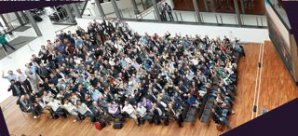More than 300 scientists gathered in Berlin to define future ESS science
In Berlin, more than 300 scientists have gathered to define the science of the future European Spallation Source.

In total, ideas from more than 1000 scientists have been fed into the project.
When built in 2019, the European Spallation Source will be one of Europe’s largest science facilities. Currently, 17 European countries are planning to build the ESS facility, which will be the world’s brightest facility for advanced materials research and life science with neutrons.
The conference “Science & Scientists at ESS”, held on 19-20 April in Berlin, Germany, was the largest in a series of conferences, meetings and workshops with the aim of asking European scientists what science they want to do at the future ESS. Today, neutrons are used for advanced studies on the molecular level within a wide variety of scientific disciplines. The details of the science that will be done at the ESS will be decided over the coming years, based on the input that will be given by the science community over the next few years.
In the conference, a large number of ideas for future scientific and instrumental opportunities at ESS were presented.
“The conference shown an impressive breadth in scientific and instrumental ideas,” says Dimitri Argyriou, ESS Science Director. “We have taken part of many, many scientific topics and valuable, innovative ideas that will be fed in the ESS science planning.”
“I am very happy to see that such a large number of scientists are keen to contribute to building experimental opportunities and scientific communities around the ESS, especially considering the very early stage in the ESS project. Scientists are not only waiting passively for ESS to open in 2019, but are engaging already now,” says Dimitri Argyriou.
At the conference, feedback from more than 1000 scientists was channeled into the ESS project. Around 70 poster presentations, each made by a group of scientists, were made on instrumental possibilities enabling new science, and around 30 poster presentations on scientific opportunities that ESS would give. Feedback was also given from several scientific symposias on future scientific opportunities at ESS, in which more than 700 scientists had taken part.
“Germany has the world’s largest neutron user community, and therefore has a particular interest in the ESS project. It is self-evident for Helmholtz-Zentrum Berlin to take a very active participation in the ESS project,” says Anke Kaysser-Pyzalla, Scientific Director of HZB.
The conference was organised together with the Helmholtz-Zentrum für Materialien und Energie, Berlin. HZB operates one of the two neutron sources in Germany, and is one of the partner laboratories taking part in the project planning and design of the ESS facility. Several German research institutes, universities and laboratories are taking active part in the design and construction of ESS.